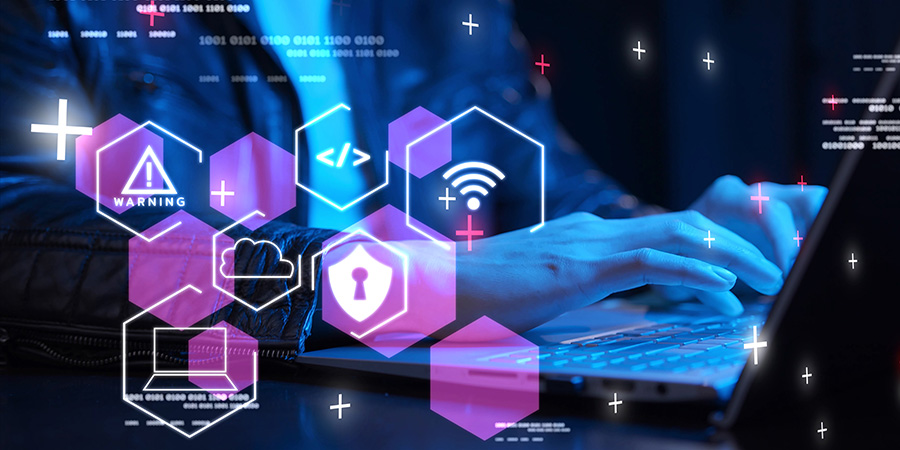In the Middle East and North Africa (MENA) region, the integration of generative AI (GenAI) has the potential to generate an economic value of USD 23.5 billion by the year 2030. Given this prospect, it is crucial to develop a thorough comprehension of the implications associated with incorporating this technology into security frameworks.
The advent of GenAI has ushered in a transformative era for cybersecurity, presenting both positive and negative impacts.
Positive Impacts
- Advanced Threat Detection: Generative AI, with its adept ability to analyze extensive datasets and discern subtle patterns, plays a pivotal role in the early detection of potential cyber threats. This enables organizations to respond promptly, mitigating the impact of cyberattacks.
- Automated Incident Response: Automating routine tasks empowers cybersecurity teams to focus on more complex issues, resulting in faster response times and enhanced system resilience.
- Adaptive Security Policies: Generative AI facilitates real-time learning from emerging threats, enabling dynamic adjustments to defense strategies, ensuring cybersecurity measures remain effective.
- Human Augmentation: By aiding analysts in data interpretation, threat hunting, and decision-making, generative AI enhances the overall efficacy of security teams.
Negative Impacts
- Adversarial Attacks: Manipulating AI algorithms to deceive systems and induce incorrect decisions poses a significant threat to cybersecurity.
- Data Poisoning: The introduction of malicious data can influence the decision-making process of AI, leading to inaccurate predictions and compromised cybersecurity.
- Over-Reliance on Automation: False positives or misinterpretations by AI systems may result in unnecessary alerts or the overlooking of genuine threats, emphasizing the need for human intervention.
- Ethical Concerns: Issues such as privacy violations, bias in decision-making, and responsible AI use demand careful attention to ensure the ethical deployment of generative AI in cybersecurity.
- Phishing: Leveraging publicly-available personal information to create realistic scams magnifies the scale and efficiency of phishing-as-a-service (PhaaS), posing a substantial risk.
- AI-Based Fake Accounts: The productivity of attack strategies conducted by fake accounts, including fraud, credential stuffing, disinformation, and marketplace manipulation, could witness a significant boost.
- Real-Time Input: Attackers can elevate the sophistication of their strategies (by incorporating knowledge from open generative AI systems, such as ChatGPT) during live attacks, exploiting APIs for nefarious purposes.
LLM Vulnerabilities
In the absence of adequate safeguards, large language models (LLMs) may generate a deluge of vulnerable code. GenAI code generation, characterized by unique and bespoke code for each developer, poses challenges for security. Organizations prioritizing speed over security risk introduce new vulnerabilities as code assistants generate code rapidly, potentially overlooking critical security reviews. The development timeline of the LLM plays a crucial role; if it falls behind, the model may lack awareness of the latest vulnerabilities. This limitation could impede its ability to construct secure code and avoid importing libraries with potential vulnerabilities. Thus, a balanced approach that prioritizes both speed and security is imperative in the generative AI era.
As generative AI models progress in their development throughout 2024, the proliferation of Security Copilots is anticipated to elevate the effectiveness of security operations, particularly in the realm of Security Operations (SecOps) productivity. This transformation will bring about a notable change in the team's orientation, shifting from a reactive approach to a proactive mindset. The emphasis will be on constructing advanced threat intelligence platforms that make use of AI as early-warning systems.
GenAI Represents a Pivotal Moment in Cybersecurity
According to a survey involving 1,500 IT and security decision-makers worldwide, almost half of the respondents from the Americas, China, Europe, Asia-Pacific, Japan, and the Middle East and Africa regions indicated their preparedness to implement machine learning (ML) and analytics. This deployment aims to ensure the integrity of their backup data before recovery in the event of a cyberattack.
However, the incorporation of GenAI capabilities into security products remains limited; with a preference for machine learning over AI, specifically in the domain of anomaly detection. This scenario underscores the significance of GenAI as a turning point for cybersecurity, presenting both challenges and solutions. Survey respondents exhibited cautious optimism, with low expectations regarding the technology's contribution to long-term cyber resiliency plans.
Interestingly, slightly over half of the respondents believe that generative AI will initially offer organizations an advantage in their defense against cybercriminals, while approximately 20% foresee its potential to assist both attackers and defenders. Recognizing potential negative impacts, there is a consensus that cybercriminals may exploit GenAI in the near term to evade cyber defenses.
Increased Pressure on the CISO Role
The substantial global average cost of USD 4,450,000 per data breach underscores the severity of the situation, with repercussions extending to customer relations, reputation damage, and business prospects. In response to escalating cyber threats and vulnerabilities, the C-suite is anticipated to play a more active role in cyber risk-related decisions.
Reports indicate that heightened executive accountability and substantial fines for violations will encourage boards to regularly focus on cybersecurity matters. Possible actions include establishing dedicated cybersecurity committees, seeking advice from external advisors, and demanding regular reports from Chief Information Security Officers (CISOs).
This evolving landscape has transformed the role of the CISO from managing tactical risks and compliance enforcement to being an integral part of business strategy decisions, contributing to cybersecurity-enabled competitive advantages. Consequently, CISOs are urged to mandate cybersecurity education and training programs as additional measures to mitigate risks; and incorporate cybersecurity best practices into broader company-wide strategies.











